The history of ear impression materials has not been systematically traced, even though what have been described as “custom” earmolds have been reported to at least 18851, implying that some kind of ear impression served as a model. The first report identifying an impression material for the ear (wax) was by Hawksley in 1890. The Hawksley reference, and a previous post, have shown that ear impression materials followed (although somewhat later) that of dental impressions of the teeth. This post continues the historical development of ear impression material, covering the transition from ethyl methacrylate to silicone.
Custom Earmolds Were Not the Norm
Many hearing professionals fail to recognize that even though a variety of ear impression materials had been introduced by the 1960s to make customized earpieces, many dispensers of hearing aids continued to use “stock” earmolds and/or a variety of ear tips when fitting hearing aids. These were commonly used by hearing aid dispensers – and especially by audiologists when conducting hearing aid evaluations in clinics, hospitals, and university centers – long before the latter were allowed to dispense hearing aids. Examples of stock earmolds are shown in Figure 1, and are featured in Hal-Hen catalogs from at least 1958 through 1970. Although stock earpieces at the time met with varying degrees of success (mostly poor), it would be an error to believe that “stock” earpieces no longer are used, because many of the current RIC (receiver-in-the canal) and RIA (receiver-in-the-aid) hearing instruments are fitted using flexible eartips of varying sizes and configurations from an existing supply of pre-sized and available couplers (non-customized).
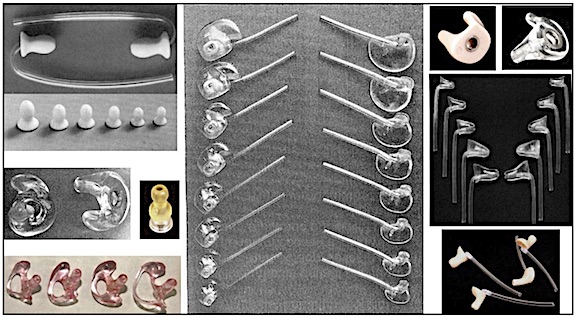
Figure 1. A sampling of stock hearing aid coupling devices to the ear. These ordinarily are available in a same configuration, but in a variety of sizes to accommodate different size ears2.
The 1960s – From Ethyl Methacrylate to Silicone
Acrylic Material (also called: powder and liquid, ethyl Methacrylate)
Even though acrylic material was introduced to make ear impressions in about 19463, it was still a fairly new technology well into the late 1950s4. The powder and liquid combination had a long life span in being used to take ear impressions, primarily from the late 1940s and continuing at least into the early 1980s, but with the bulk coming in the 1960s and 1970s.
1964 – Formtex impression compound
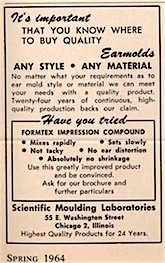
Figure 2. This is a 1964 ad for Formtex ear impression material. (Audecibel, Spring, 1964).
Scientific Moulding Laboratories of Chicago, in an ad for quality earmolds in the Spring of 1964 (Figure 2), asked if the reader had tried their greatly improved “Formtex Impression compound.” The ad noted that the company had been making quality products for the past 24 years, which would put them back to 19405. It is unclear, however, if “making quality products for the past 24 years” refers to making earmolds, impression material, or dental and other products. That it refers to Formtex as being an “improved” product suggests, from the ad, that their previous impression product may have been tacky, set slowly, was difficult to mix, and would shrink. This suggests that their previous impression material may have been hydrocolloid, but it is not known when Formtex was actually introduced. It would seem to have been after 1946, the year Berger3 reported the approximate introduction date of acrylic materials used to take ear impressions. But, even then, Berger mentioned that plaster of Paris impression material was still used throughout the 1940s.
Houston Space Control – Your Earmolds Are Ready
1965 – Ear impressions for the first astronauts
Ear impressions were used to make earmolds for Astronauts Gordon Cooper, Pete Conrad, Neil Armstrong, and Elliott See. The earmold impressions were made by hearing aid dispenser Stanley G. Barr of Orlando, FL, based on interest generated to the Houston, TX Space Agency by fellow hearing aid specialist Gordon L. Bisel. The earmolds were made by Bruel C. Kent and W.R. Rice at Mid-States Laboratories, Wichita, KS6. The custom earmolds made from these ear impressions were used in their communications systems, replacing the cumbersome ear sets that the astronauts had been using. Reports indicated that the communication systems involving the earmolds were so successful that the Space Agency ordered earmolds for the astronauts scheduled for the October, 1965 space shots: Ed White, Frank Boorman, Jim Lovell, and Mike Collins.
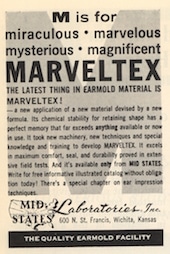
Figure 3. This ad for Marveltex, provided by Mid-States Laboratories, features “the latest thing in earmold material”, and was published in the Fall, 1965 issue of Audecibel.
While the short Audecibel article reference to this mentioned that the impressions were made of wax, personal communication with Woody R. Rice of Mid-States indicated that the impression material was powder and liquid7. This would seem to make sense because Mid-States Laboratories was advertising Marveltex (Figure 3) at that time, the latest thing in earmold material8. It is suspected that the anonymous writer of the article was not familiar with ear impression materials/terminology. The ear impressions and earmolds for astronauts Cooper and Conrad are shown in Figure 4.
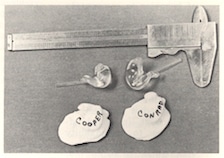
Figure 4. The photo shows the original ear impressions and finished earmolds for U.S. astronauts Gordon Cooper and Pete Conrad as used on their Gemini space flight. Five earmolds each were made for the two astronauts and their backup crew, Neil Armstrong and Elliott See6.
During Mid-State’s work with the NASA program, they became known as The Earmold Suppliers for the Astronauts, and as a result of that relationship, were afforded the rights to the ear impression materials that became known as Audtex and Apollo.
Next week’s post takes the historical development of ear impression material from ethyl methacrylate to a more flexible and reliable ear impression material.
References
- Berger, K.W. (1976). The earliest known custom earmolds. Hearing Aid Journal, March, pp. 10, 35.
- Staab, W.J. 2014. Hearing aid evolution VI – hearing aid coupling, https://hearinghealthmatters.org/waynesworld/2014/hearing-aid-evolution-vi-hearing-aid-coupling/.
- Berger, K.W. The Hearing Aid: Its Operation and Development, 1974 Revised Edition, p. 117, National Hearing Aid Society, Livonia, Michigan.
- Cartwright, Karl. 2009. 50th anniversary reflections, West Tones, October, Colorado Springs, CO.
- Scientific Mountings Laboratory ad in Audecibel, Spring, 1964.
- Earmolds for Astronauts. Audecibel, Fall 1965, p 140.
- Rice, Woody R. Personal communication, 8/22/2016.
- Marveltex ad. Audecibel, Fall, 1965, p. 172.



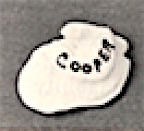



I am quite allergic to silicone. I was fitted with “nonallergenic” silicone earmolds several times, and suffered highly inflamed ears every time. I was told that hard clear acrylic earmolds “weren’t made anymore” when I asked for them. It took a doctor’s order to get me an “obsolete” earmold with which I was happy for many years. The excuse I was often given was the silicone earmold “conformed” to the ear for a tight fit. This nonsense ignores the fact the inside of all ears withdraw slightly from the gross pressure of any earmold within days. “Conforming” is equally silly as the silicone earmold is functionally about as pliable as the outside of a baseball. It can’t “conform” to the much softer and pliable outer ear, however the manufacturer wishes it were so. I used acrylic earmolds beginning in the early 1950’s. The impressions were always taken first with a wad of cotton on a string set down the ear canal, then a soft and pliable material was mixed up, stretched out, narrow end put in and gently pressed to fill the entire outer ear. After several minutes the still warm impression was pulled out. Nothing to it!
Any earmold laboratory can make you an acrylic earmold, even from a silicone ear impression. I suggest that you ask again, and if who you contact tells you that this can’t be done, you might consider asking another competitive source.